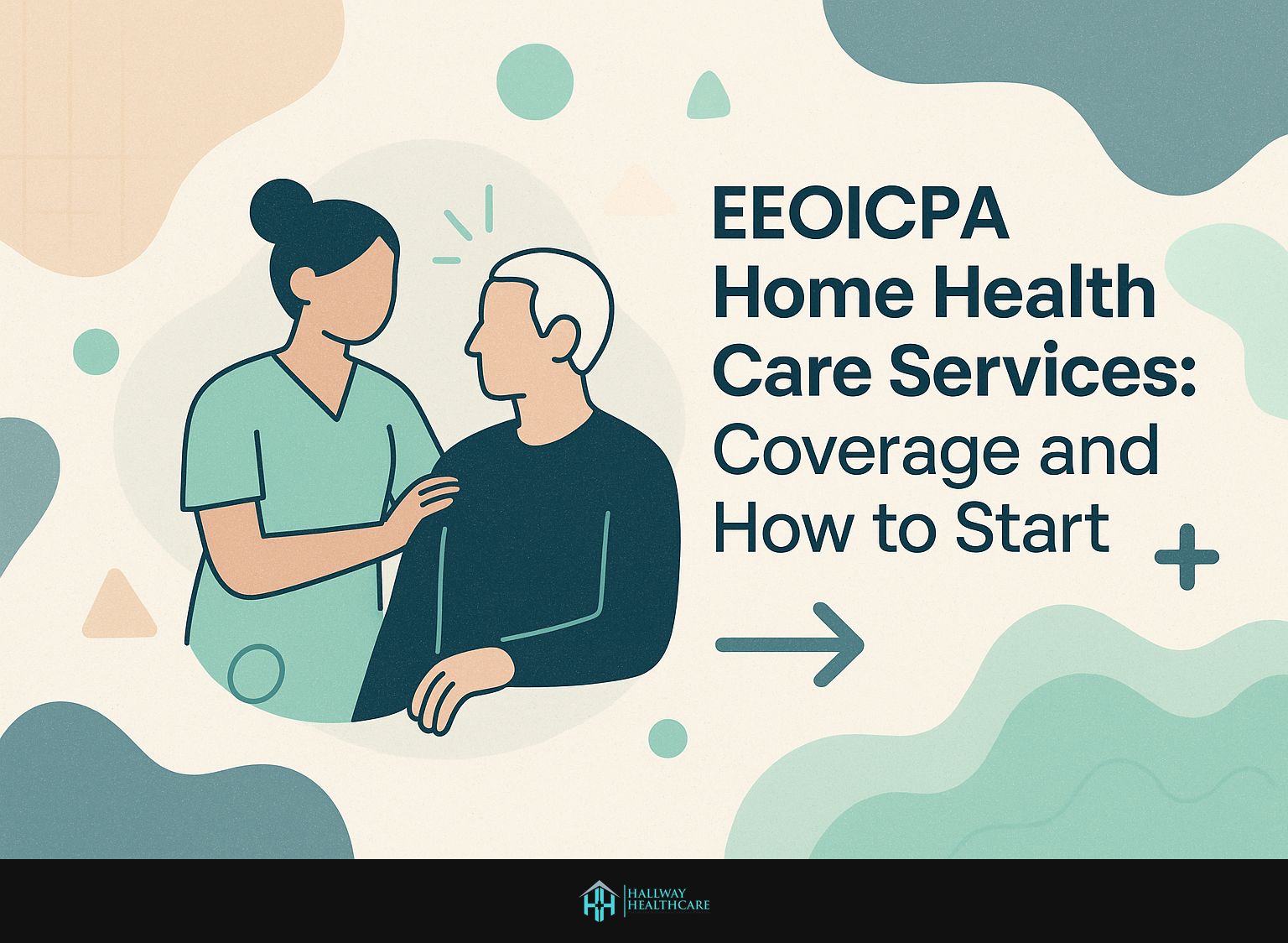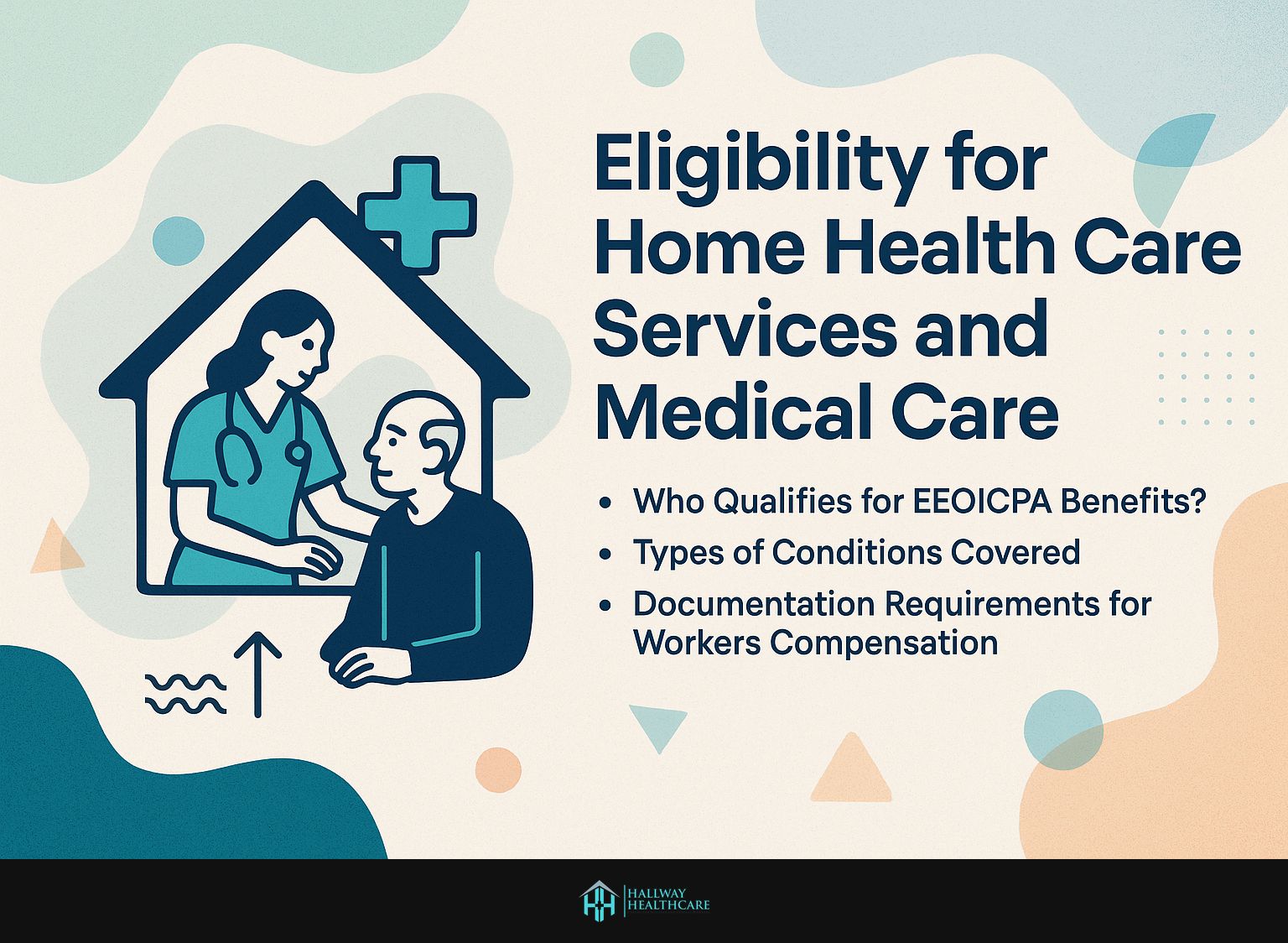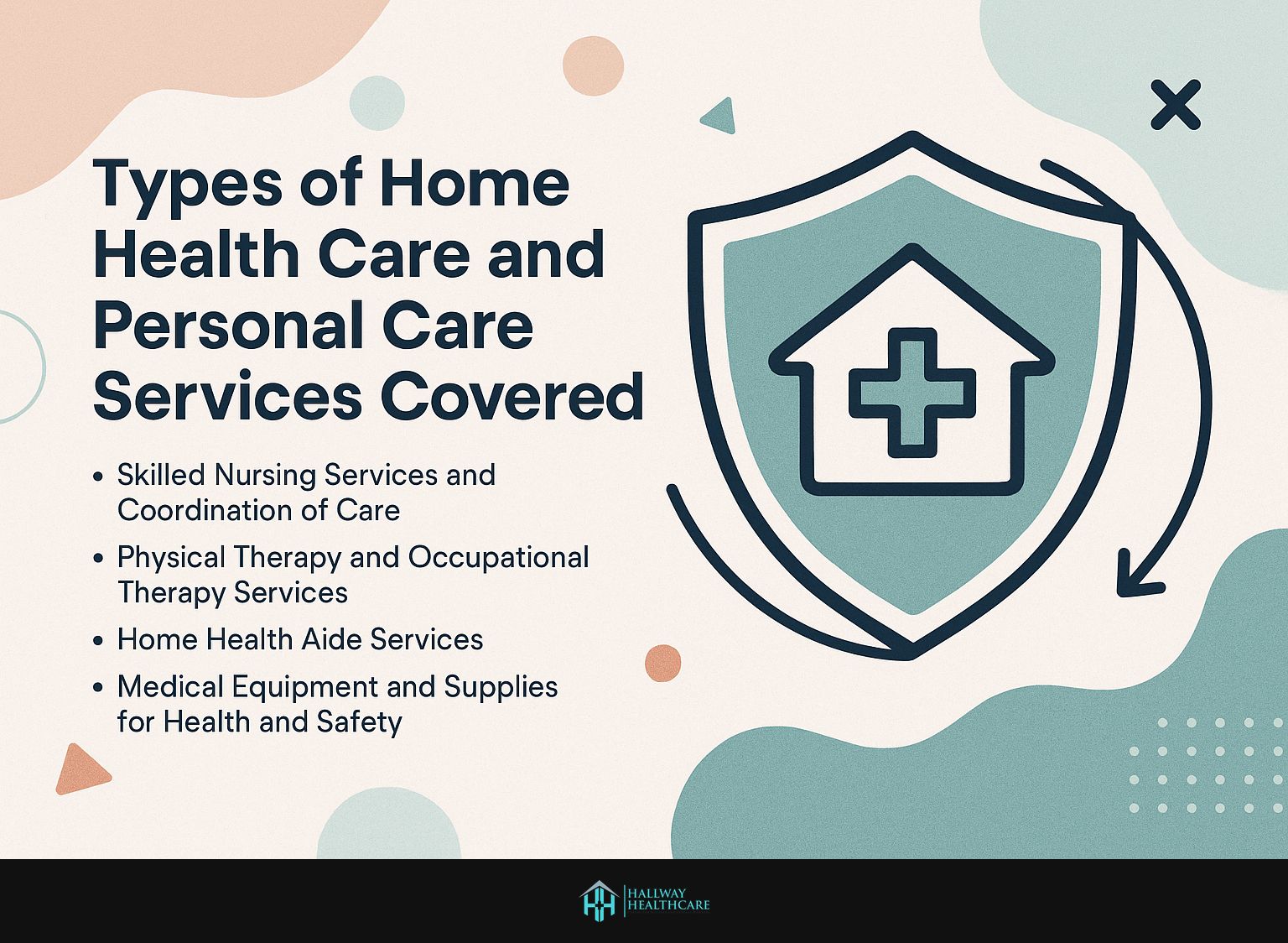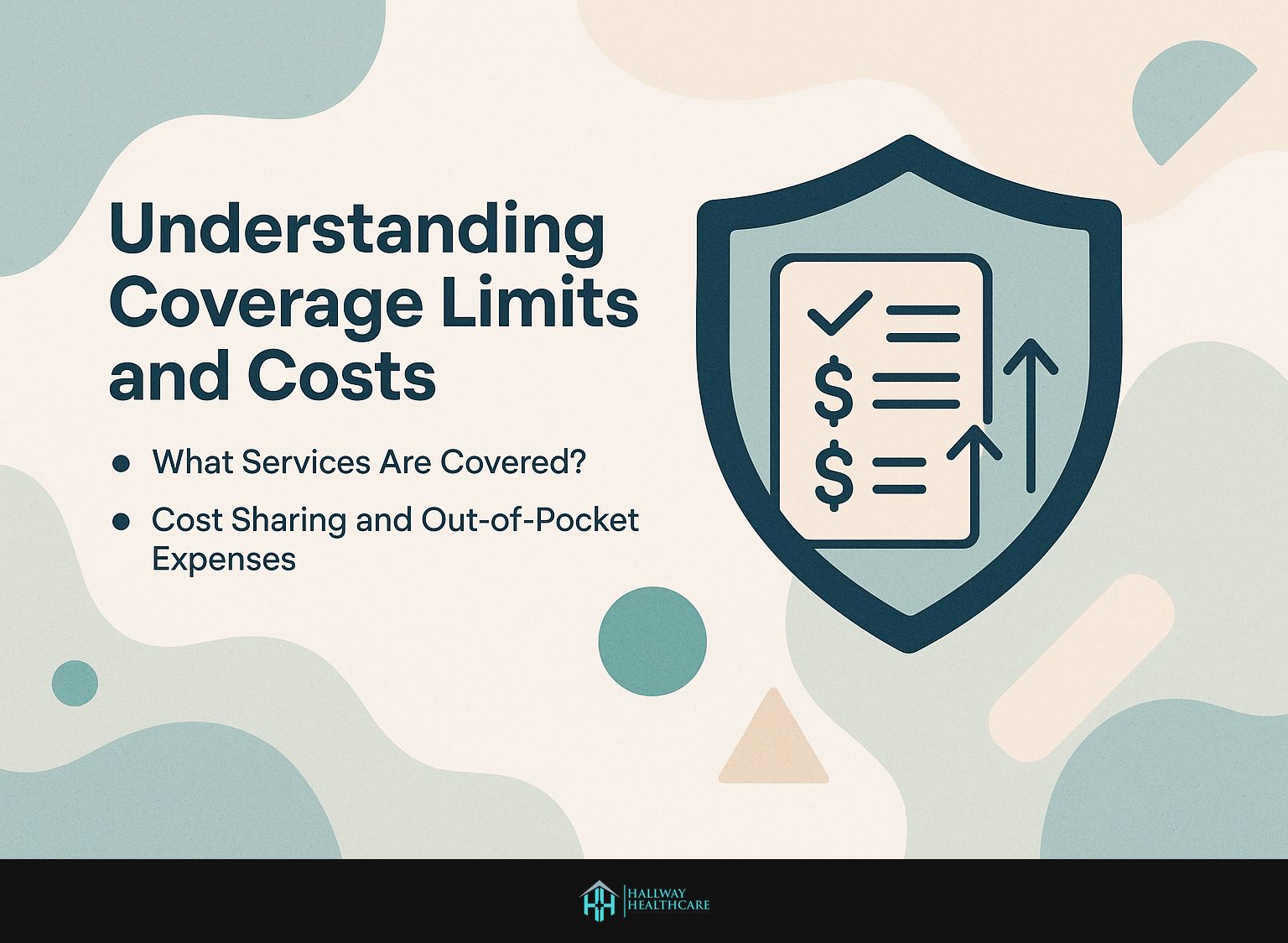
Navigating healthcare services under the EEOICPA is crucial for former nuclear and uranium workers. This guide outlines coverage options available, including skilled nursing and case management tailored to your needs. Discover how to start your EEOICPA home benefits. Ensure you receive the care you deserve. Whether you’re unfamiliar with the process or looking to maximize your EEOICPA coverage, this article offers valuable insights to help you get started.
Key Takeaways:
- EEOICPA provides financial assistance for home health care services.
- Eligibility is based on specific criteria.
- Start the application process by completing important forms and providing documentation.
Overview of EEOICPA
Established in 2000, the Energy Employees Occupational Illness Compensation Program Act (EEOICPA) provides compensation and medical benefits, including medical travel, to eligible workers who have been affected by occupational illnesses resulting from radiation exposure.
To qualify for these benefits, workers must provide evidence of radiation exposure during their employment in specific sectors, including uranium mining and nuclear weapons production.
The key benefits offered under this program encompass healthcare for covered conditions, such as personal care attendant services, as well as financial compensation for lost wages.
It is essential to engage an authorized representative to navigate the often complex claims process, ensuring that all necessary documentation and evidence are submitted accurately, including durable medical equipment requests.
Securing this support can significantly enhance the likelihood of a successful claim and mitigate the stress associated with the procedure.
Purpose and Importance
The Energy Employees Occupational Illness Compensation Program Act (EEOICPA) functions as a vital resource for former nuclear workers. It ensures they receive essential medical care and financial compensation for their contributions. This program addresses specific medical needs through a range of comprehensive healthcare options, including physical therapy, occupational therapy, and speech therapy for chronic illnesses associated with radiation exposure.
Furthermore, it provides reimbursement for medical expenses, including doctor visits and prescription medications.
The emotional well-being of these workers is a primary concern, as the program offers access to mental health support services designed to address emotional trauma. By advocating for preventive care and facilitating regular health screenings, EEOICPA plays a critical role in improving the overall quality of life for these individuals, enabling them to regain a sense of normalcy and security following their service, including addressing nutritional needs.
Eligibility for Health and Medical Care Services
Assessing eligibility for home health care services is essential for claimants pursuing benefits related to their medical needs.

Who Qualifies?
Eligibility encompasses current or former energy employees. They must show evidence of health issues from toxic exposure in the workplace.
To qualify, claimants must provide evidence of specific health conditions, such as cancer, respiratory illnesses, or other ailments associated with toxic exposure, and secure the roles of authorized representatives. A comprehensive employment history detailing positions and locations worked is required.
Additionally,
Documentation from medical professionals supporting the diagnosis and detailing primary care needs is crucial.
File claims with the Department of Labor. They oversee this process.
Utilizing the Department of Labor’s online portal makes it easy to submit claims. It helps organize and submit necessary documentation, speeding up the process.
Types of Conditions Covered
The Energy Employees Occupational Illness Compensation Program Act (EEOICPA) encompasses a variety of medical conditions resulting from toxic exposure, including numerous types of cancer, chronic respiratory diseases, and other occupational illnesses.
Specifically, the Act addresses conditions like lung cancer, leukemia, and chronic silicosis. These are linked to hazards like radiation and toxic chemicals, requiring home therapeutic services. For instance, employees at the Hanford Site report higher rates of lung cancer. Studies show a 25% increased risk compared to national averages, highlighting serious health risks. Furthermore, chronic respiratory conditions, often linked to asbestos exposure, impact approximately 10% of workers at legacy sites.
Monitoring these health conditions is crucial. Over 900,000 claims have been submitted since the EEOICPA started, showing its importance for energy sector employees.
Documentation Requirements for Workers Compensation
Proper documentation is essential for securing benefits under the Energy Employees Occupational Illness Compensation Program Act (EEOICPA). This includes collecting medical records, proof of employment as a nuclear worker, and accessing medical alert systems.
If needed, contact your healthcare providers to obtain these documents.
Next, compile a comprehensive employment history. Include job titles, locations, and dates of employment following Department of Labor guidelines. This information can usually be found on pay stubs or employment letters. Additionally, if applicable, relevant health assessments from prior occupational health evaluations should be secured.
Ensuring that these records are accurate and complete will significantly improve the likelihood of a successful claim.
Types of Services Covered
Home health care services under the Energy Employees Occupational Illness Compensation Program Act (EEOICPA) address various medical needs. This includes skilled nursing services and essential medical equipment.

Skilled Nursing Services and Coordination of Care
Skilled nursing services provide critical medical care administered by registered nurses, licensed practical nurses, and certified nursing assistants, specifically tailored to meet the individual needs of each patient.
These home health services include essential tasks like:
- Medication administration
- Wound care
- Patient education
To access these services under the Energy Employees Occupational Illness Compensation Program Act (EEOICPA), patients or their representatives should collect necessary medical documentation. Then submit a formal request through authorized providers. It is also prudent to contact the local EEOICPA district office for assistance regarding eligibility and to facilitate the application process.
Clear communication with healthcare providers is vital for patients to receive the support needed for effective recovery.
Physical Therapy and Occupational Therapy Services
Physical and occupational therapy are key components of home health care. They help patients regain independence and improve their quality of life.
These therapies include mobility training. Therapists guide patients in using walkers or canes to improve independent movement.
Patients work with their healthcare provider to create a personalized plan that may be covered by insurance. Successful rehabilitation leads to significant improvements. These include increased strength, better balance, and the ability to perform daily activities with less help.
Home Health Aide Services
Home health aide services provide vital support for daily tasks and personal care. They greatly enhance patients’ emotional health and quality of life. These services typically encompass assistance with activities such as bathing, dressing, grooming, and meal preparation.
Individuals must complete a claim form through the Department of Labor to access these services under the Energy Employees Occupational Illness Compensation Program Act (EEOICPA). Upon approval, they can select from certified home health care agencies that will coordinate the necessary services based on their specific medical needs.
Verify that the chosen agency is accredited and knowledgeable about EEOICPA requirements. This ensures proper service delivery.
Medical Equipment and Supplies for Health and Safety
The EEOICPA covers a variety of durable medical equipment and supplies needed for energy employees with health conditions.
Patients may acquire necessary medical equipment, such as wheelchairs, oxygen supplies, and therapy devices, by submitting a claim under the EEOICPA. To initiate this process, individuals should compile relevant medical documentation and complete the required forms available on the Department of Labor’s website.
After submitting the claim, follow up with the claims examiner to ensure timely approval. For instance, a patient may request a power wheelchair by providing documentation that substantiates their mobility challenges, thereby significantly enhancing their quality of life with the help of a personal caregiver.
How to Apply
Navigating the application process for home health care services under the EEOICPA is crucial for claimants seeking necessary medical support and benefits.

Step-by-Step Application Process
The EEOICPA home health care application process includes essential steps to confirm eligibility and proper documentation.
- First, it is important to gather the necessary documentation, including proof of employment, medical records, and income statements, as well as any authorized representative roles. This step may require approximately 1 to 2 hours.
- Next, one must complete the application form, which is typically available on the Department of Labor’s website. It is advisable to allocate up to 3 hours for thorough completion of the form.
- Following this, the completed application should be submitted to the appropriate agency, such as the Office of Workers’ Compensation Programs. This submission can generally be accomplished either online or via traditional mail.
- Finally, applicants should await a decision, which may take several weeks. Monitoring the status of the application online can help mitigate any anxiety during this waiting period.
Important Forms and Documentation
Submitting the right forms and documentation is crucial for a successful application to the EEOICPA for home health care services, including personal care attendant details.
- Begin by completing Form EE-1 for initial claims, which requires basic personal information and details pertaining to your employment history.
- Subsequently, it is important to gather the necessary medical documentation, including a report from a health care provider that outlines your condition and the necessity for home health care.
- If you are applying for additional benefits, you may also need to submit Form EE-2, accompanied by proof of residency to verify your eligibility.
A well-organized submission speeds up your application processing and increases your chances of approval.
Common Application Mistakes
Common mistakes to avoid during the application process include incomplete forms, lack of necessary documentation, and missing deadlines. Ensure you double-check your application for accuracy and completeness before submission.
Common mistakes during the EEOICPA application can delay or deny benefits. Being aware of these mistakes is crucial. To improve your chances of a successful application, be aware of these pitfalls:
- First, ensure that all forms are thoroughly completed; any incomplete sections may lead to automatic denials.
- Always include necessary supporting documents, such as medical records and employment history, as missing items can cause significant delays.
- Verify that your contact information is current to avoid potential communication issues.
- Double-check submission deadlines and respond promptly to any requests from the Department of Labor to ensure that your application progresses efficiently.
Being proactive can greatly affect your application outcome.
Finding Approved Providers
Finding approved home health care providers is vital. This ensures eligible claimants receive necessary care, including services from registered and licensed practical nurses.
Criteria for Choosing Providers
Choosing a home health care provider requires careful evaluation of several criteria. This ensures quality care tailored to patient needs.
Begin by assessing the provider’s accreditation to verify compliance with state and federal standards, which is essential for ensuring patient safety.
Subsequently, review testimonials from other families to gain insights into satisfaction levels and the quality of care provided.
It is also important to inquire about the availability of specialized services, such as physical therapy or dementia care, to address specific patient requirements effectively.
Conduct thorough interviews and ask about staff training. This ensures the provider offers compassionate and skilled care tailored to the patient’s unique needs.
Resources for Finding Providers
Many resources can help claimants find approved home health care providers under the EEOICPA.
- First and foremost, individuals should consult the official EEOICPA website, where they can access a comprehensive list of approved providers along with pertinent regulations.
- Additionally, local health departments offer localized information and may provide referrals to qualified home health care services.
- Community health organizations also serve as valuable resources, often offering insights into available services and support groups.
Contact these resources directly for personalized assistance. Seeking recommendations from peers who have navigated the EEOICPA process can also help.
Understanding Coverage Limits and Costs
Claimants must understand coverage limits and potential costs of home health care services to manage their health needs effectively.

What Services Are Covered?
The EEOICPA covers a wide range of home health care services. This ensures patients receive necessary support for their health, including physical, occupational, and speech therapy.
Among these services, skilled nursing is essential for patients with chronic illnesses or those in need of recovery, as it provides personalized medical care within the home environment.
Therapy services, including physical, occupational, and speech therapy, are designed for patients recovering from surgery or injury, facilitating enhancements in mobility and communication. Additionally, durable medical equipment (DME) such as wheelchairs, oxygen tanks, and hospital beds plays a critical role in ensuring patient comfort and mobility.
To access these services, consult your healthcare provider for referrals and to verify EEOICPA coverage.
Cost Sharing and Out-of-Pocket Expenses
Claimants should understand cost-sharing and potential out-of-pocket expenses related to home health care services under the EEOICPA.
Cost-sharing greatly impacts a patient’s financial burden. Under EEOICPA, common arrangements include co-payments and deductibles.
For example, if a home health care visit costs $100, patients typically pay a co-payment of 20%, which is $20.
Therefore, claimants must understand and plan for these expenses. They can add up quickly and impact access to care.
Appealing Denied Claims
Knowing the appeal process for denied EEOICPA claims is crucial. This helps claimants secure the benefits they deserve.

Reasons for Denial
Claims under EEOICPA can be denied for several reasons. This highlights the need for thorough preparation and proper documentation.
Common reasons for denial include insufficient documentation, unmet eligibility criteria, and missed deadlines. To mitigate these risks, it is essential to ensure that all requisite records are meticulously gathered, encompassing employment history, medical records, and any necessary witness statements.
Using tools like checklists can help track document requirements and deadlines. Additionally, it is wise to seek help from organizations specializing in EEOICPA claims. They can navigate the process and strengthen your application.
Proactive preparation can significantly improve the likelihood of a successful claim.
Steps to File an Appeal
Filing an appeal for a denied EEOICPA claim requires a systematic approach. This maximizes your chances of success.
Start by reviewing the denial letter. Understand the specific reasons for the rejection. Subsequently, gather the necessary documents, including the original claim form (EEOICPA Form 95) and any supporting medical evidence. It is imperative to submit your appeal within the 60-day deadline from the date of denial.
The appeal can be submitted either online or by mail to the appropriate Department of Labor office. To strengthen your case, include expert opinions or additional documents that address the denial reasons.
Throughout this process, clear and concise communication remains essential.
 Skip to content
Skip to content
